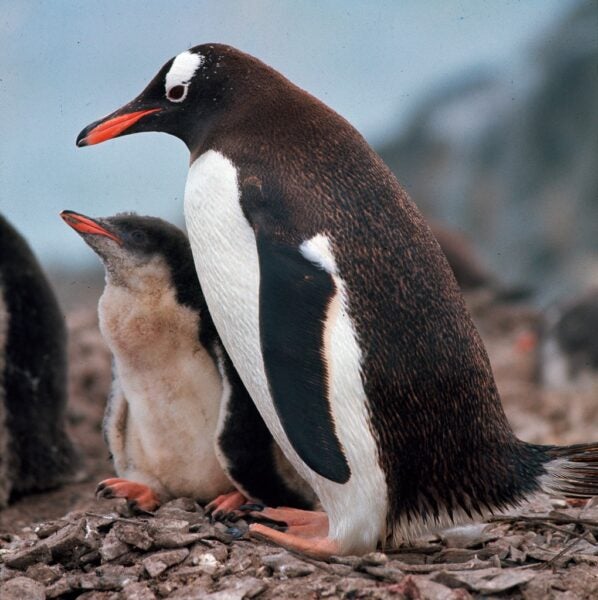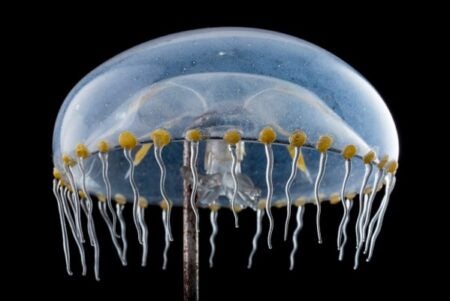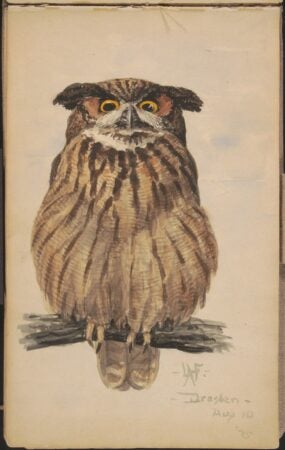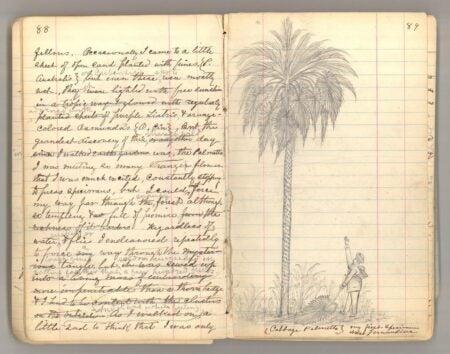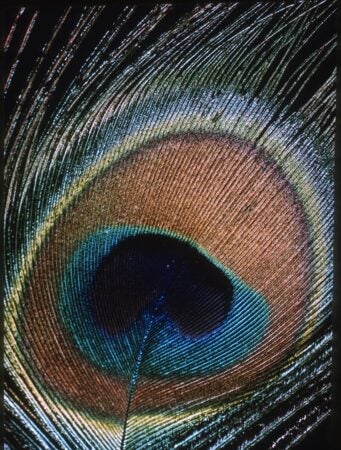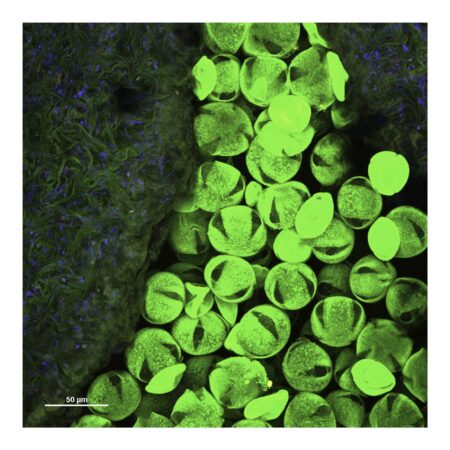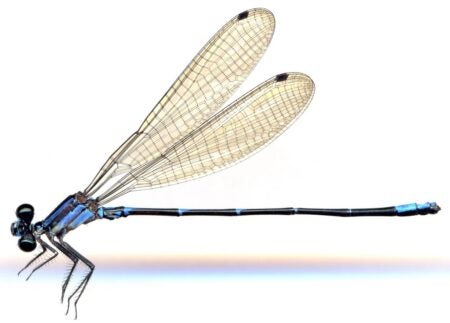Explore Earth Day with Artstor and JSTOR: Environmental Studies and the Biosphere

Ami Vitale. A field of blue… 2008. Photograph. © Ami Vitale / Panos Pictures.
In homage to Earth Day we have gathered a list of resources on JSTOR, from licensed to freely accessible community-contributed collections. We encourage you to explore this content — it combines art and science, enriching the study of the environment and the biosphere across the globe: photography from the microscopic to the panoramic, scientific and anatomical illustrations, evidence from surveys and studies, models, artists’ interpretations in varied media, the vision and work of conservationists, and the effects of our existence on this planet from millennia of cultivation and development to the threats of climate change.
- Abbie Trayler-Smith. A sandstorm arrives at Lake Banzena… 2009. Photograph. © Abbie Trayler-Smith / Panos Pictures.
- Richard Kalvar. France. Aquitaine region. Landes department. Forest… 1999. Photograph. ©Richard Kalvar / Magnum Photos.
- Thomas Hoepker. Argentina. Patagonia. Iceberg … on Lago Argentino near Upsala Glacier. 2005. Photograph. ©Thomas Hoepker / Magnum Photos.
- Stanley N. Botwinik. Gentoo penguin and chick. 1972. Photograph. Image and data from the Peabody Museum of Natural History.
- Leopold Blaschka, Rudolf Blaschka. Clytia phosphorica. Glass model. Photographer, Gary Hodges. Image and data from Cornell University.
- Louis Agassiz Fuertes. Owl in Dresden. 1895. Watercolor. Image and data from Cornell University Lab of Ornithology Art Collection.
Open Artstor collections
Freely accessible Creative Commons-licensed museum, library, and archive collections.
- Open Artstor: Museum of New Zealand – Te Papa Tongarewa (46,159 images) – Selections include views of the natural and man-made environments of New Zealand and its inhabitants, recorded and depicted in a wide variety of media.
- Open Artstor: Wellcome Collection (104,659 images) – The physiology, behaviors and pathologies of human, animal and plant life in prints, drawings, photographs and other media.
- Dr Henry Oakeley. Papaver rhoeas L. Papaveraceae Corn Poppy, Flanders Poppy. Photograph. Image and data from Wellcome Collection. CC BY 4.0.
- Paul Martinson. Mantell’s Moa. From the series: Extinct Birds of New Zealand. 2005. Watercolor. Image and data from Museum of New Zealand – Te Papa Tongarewa. CC BY-NC-ND 4.0.
- Shozaburo Watanabe. Two bar-tailed godwits. Woodcut. Image and data from Museum of New Zealand – Te Papa Tongarewa. No Known Copyright.
Artstor licensed collections
A wide range of subscription-based, multidisciplinary content from some of the world’s top museums, artists, libraries, scholars, and photo archives, including rare collections not accessible anywhere else.
- American Museum of Natural History (1,667 images) – Photographs from the museum’s Department of Anthropology, and the Research Library’s Photo Archive, provide views of the displays, objects and specimens, staff and activities of the institution.
- Cook’s Voyages to the South Seas (Natural History Museum, London) (1,647 images) – During the 18th century the British captain James Cook led three voyages of exploration, charting the Pacific Ocean and circumnavigating the globe.The expeditions contributed to geographic, oceanographic, and astronomical knowledge, as well as the discoveries made by accompanying naturalists and artists – drawings and watercolors.
- First Fleet Collection (Natural History Museum, London) (600 images) – In 1787, the “First Fleet” set sail from Portsmouth, England to found a colony with the labor of hundreds of prisoners in New South Wales, Australia, making a permanent landing in Port Jackson (now Sydney). The collection is made up of drawings and watercolors of the native landscapes, flora, fauna, and people, made by members of the expedition. Many of the drawings are iconotypes, meaning that the original specimen on which the drawing is based has been lost.
- Hill Ornithology Collection (Cornell University Library) (265 images) – Illustrations, mostly prints, depicting North American birds and including color plate books and other works from the 16th to 19th centuries, with a highlight being the double-elephant folio of Audubon’s Birds of America.
- Magnum Photos (126,439 images) and Panos Pictures (35,017 images) – These collections of journalistic photographs cover global development including nature, landscapes, manifestations of climate change, the impacts of the built environment and industry, and the actions of conservationists and climate activists.
- Vesalius Anatomical Illustrations (Northwestern University) (253 images) – Vesalius (1514-1564) was an anatomist, physician, and the author of a treatise on human anatomy known as the Fabrica. First published in 1543, it is an atlas of the human body, informed by Vesalius’ experience with autopsies and dissection. The illustrations for the Fabrica, based on woodcut prints, are the subject of this collection.
- Yale Peabody Museum of Natural History (11,177 images) – The selection includes the museum’s natural history collections, notably dinosaurs and mammals, along with thousands of images from archival collections, mostly of archaeological and ethnographic objects.
- John Muir. July 1867 – Feb. 1868, The “Thousand Mile Walk”…Image 48, 07-01-1867. John Muiir Journals. Drawing. Image and data from the University of the Pacific.
- Herbert Keightley Job. Red Fox, Kent, Connecticut. 1902. Lantern slide. Image and data from Trinity College, Watkinson Library.
- Unknown. Peacock feather. 20th century. Photograph. Image and data from Rhode Island School of Design Library.
- SLU Project Coordinators: Jill Pflugheber, Dr. Steven White. Royal Purple Brunfelsia… 2017. Confocal microscopy. Image and data from St. Lawrence University.
- Bill Haber, researcher. Argia species D, male; Pond Damsel. Photograph. Image and text copyright (©) 2013 William A. Haber, University of Massachusetts Boston.
Shared Collections
Freely accessible primary source materials contributed by partner institutions at universities, libraries, museums, and organizations around the world.
- Andrew Greller Scrapbooks (2 scrapbooks – 100 pages, with photographs) – Dr. Andrew Greller is Professor of Biology Emeritus, Queens College, City University of New York (CUNY). He served on the faculty from 1967-1998, teaching courses on botany, ecology and bio-climatology at the undergraduate and graduate levels. He studied vegetation in areas all over the world and published work in numerous scientific journals, including the American Journal of Botany and the Botanical Gazette. He has been active in local land conservation efforts since the late 1960s and applied his unique knowledge of the flora and fauna as talking points and justifications for the preservation of park land. Notably, Greller submitted proposals to city officials to conserve Pea Pond, an area between two parks in northern Queens, and proposed the addition of nature trails.
- Bard College Montgomery Place Campus Collection: Mushroom Drawings of Violetta White Delafield (573 images) – A collection of annotated watercolors by Violetta White Delafield, who lived at Montgomery Place from 1921 until her death in 1949. A selection of mushrooms identified on the grounds of Montgomery Place is also included in the collection. Bard College’s Montgomery Place Campus is a 380-acre estate adjacent to the main campus in Annandale-on-Hudson, NY.
- Chatham University: Collection on Rachel Carson (64 images) – Photographs and documents from the life of the groundbreaking environmentalist (1907-1964) provided by her alma mater.
- Cornell: Cornell Collection of Blaschka Invertebrate Models (251 images) – Photographs of glass invertebrates created by renowned 19th century artists Leopold and Rudolf Blaschka.
- Cornell: Historic Glacial Images of Alaska and Greenland (2,135 images) – Photographs from Cornell expeditions to glaciated areas in Greenland and Alaska (late 19th – early 20th centuries), offering comparisons in glacier formations over time and through climate change.
- Cornell: Icelandic and Faroese Photographs of Frederick W.W. Howell (416 images) – Icelandic and Faroese photographs by Frederick W. W. Howell, Henry A. Perkins, and Magnús Ólafsson. At the end of the 19th century, the British photographer Frederick W.W. Howell recorded Icelandic and Faroese landscapes, farmsteads, towns, and people on the cusp of modernity.
- Cornell: Laboratory of Ornithology Gallery of Bird and Wildlife Art (787 images) – More than two centuries of prints, drawings, and illustrations by bird artists, including Alexander Wilson, John James Audubon, and Louis Agassiz Fuertes.
- Cornell: Plant Pathology Herbarium (CUP) (16,544 images) – Photographs documenting 120 years of plant pathology, mycology, and agricultural practice, including preserved specimens of fungi and plant diseases.
- Field Guide of Biodiversity (223 images) – Photographs illustrating biodiversity from the northeastern United States, with an emphasis on turtle species.
- Hamilton College: Geosciences Rock Collection (653 images) – Photographs of samples acquired by Hamilton College faculty, students, and alumni over the past 200 years, including the broad spectrum of igneous rocks, from kimberlites and carbonatites to syenites and welded tuffs.
- Microcosms: Sacred Plants of the Americas (70 images) – Confocal microscopy, also known as confocal laser scanning microscopy, is a specialized optical imaging technique that provides contact-free, non-destructive measurements of three-dimensional shapes. In this case, plants considered sacred by indigenous groups of the Americas were scanned at St. Lawrence University’s microscopy and imaging center. The procedure gathers information from a narrow depth of field, while simultaneously eliminating out-of-focus glare, as well as permitting the creation of optical sections through biological samples. Images are built over time by gathering photons emitted from fluorescent chemical compounds naturally contained within the plants themselves, creating a vivid and precise colorimetric display.
- John Muir Journals collection (3,442 items, journals and drawings) – Called the “greatest publicist for wild places in the history of the United States” and the “Father of National Parks,” John Muir is among the foremost environmentalists of the 20th century. This collection of his journals detail his extensive travels within and outside the United States, and include written accounts of what he saw as well as maps and drawings.
- Margaret Rebecca Dickinson Collection of Watercolors (458 images) – Margaret Rebecca Dickinson (1821-1918) was a talented Victorian artist who assembled a collection of over 1,000 British plant specimens in her unique herbarium. Her beautiful botanical paintings taken from the prepared herbarium specimens are available here.
- Martin Methodist College Marine Biology Collection: Red Sea (107 images) – Marine photographs taken off the coast of Jordan.
- Martin Methodist College Marine Biology Collection: Trinidad (207 images) – Marine photographs taken in and around Trinidad.
- Martin Methodist Marine Biology Collection – Key Largo (139 images) – Marine photographs taken in and around Key Largo.
- RISD – Nature Forms (321 images) – A collection of micro and macro imagery describing forms in nature including landforms, minerals, aquatic and terrestrial animal and plant life, insects, cellular structures, and skeletal segments from the Edna W. Lawrence Nature Lab. Founded in the early 20th century by RISD faculty member Edna Lawrence to “open students’ eyes to the marvels of beauty in nature… of forms, space, color, texture, design and structure,” the Nature Lab houses specimens intended to explore biodesign, ecology, and the climate crisis. Highlights of this collection include cross sections of banana slices and Brussels sprouts and landscape photographs of geysers and mountains.
- Salve Regina University Arboretum (598 images) – Tree survey photographs and other materials from University Archives related to the university’s arboretum and landscapes.
- Salve Regina University Nature Cabinet (66 images) – Photographs of natural specimens, mostly animals.
- Trinity College Ornithology Lantern Slides (770 images) – Hand-tinted glass plate photographs of birds produced by Herbert Keightley Job from 1896-1925. Born in Boston, Job (1864-1933) was a minister, lecturer, author, ornithologist and pioneer wildlife photographer. He was CT State Ornithologist, SC Director of Nature Conservation, and held positions at CT Agricultural College and National Audubon Society.
- Wheaton College (MA) Shell Collection (438 images) – Photographs of seashells representing many species of mollusks.
- Wind Power NYC (~100 articles, reports, interviews, and strategic plans) – A comprehensive digital archive of materials (regulations, projects, research on other offshore wind power systems around the world) and recorded interviews with city agency leaders and other urban planners speaking on the topic of wind power related to the establishment of offshore wind power in New York City.
And don’t forget Global Plants, the world’s largest database of digitized plant specimens.



